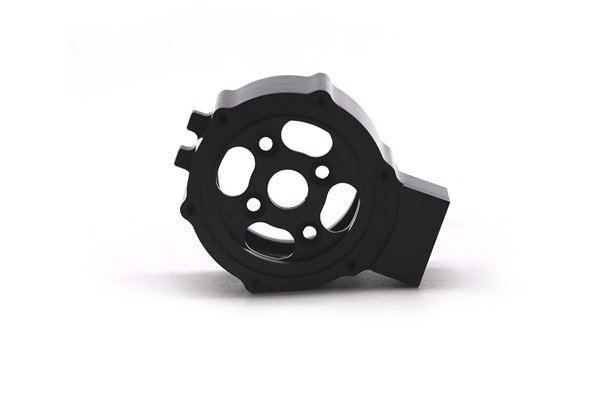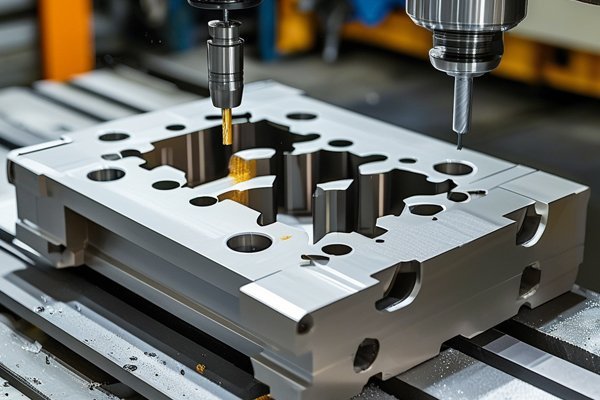Opening
Did you know that the global CNC machining market is expected to reach $100 billion by 2025? As industries increasingly turn to Computer Numerical Control (CNC) technology for precision manufacturing, a critical topic emerges: the comparative durability of components produced through CNC plastic machining versus those created through CNC metal machining. This question is vital for manufacturers, engineers, and product designers looking to optimize materials and processes while enhancing product performance and longevity.
*
—
Computer Numerical Control machining revolutionized manufacturing processes by combining computer technology and automated controls to create high-precision components across various industries. CNC machining allows for the accurate shaping of materials, including metals and plastics, but choosing the right material hinges on understanding their respective durability characteristics. The durability of a machined component significantly impacts its lifespan, performance, and overall value.
CNC plastic machining involves shaping plastic materials using precise automated machinery to produce intricate designs and components. This process is widely employed across industries ranging from automotive to medical devices.
2.1 Commonly Used Plastics
Several types of plastics can be used in CNC machining, each exhibiting varying degrees of durability. Some commonly employed materials include:
2.2 Advantages of CNC Plastic Machining
CNC plastic machining offers several advantages, including:

CNC metal machining is the process of using CNC machines to mill, turn, or drill metal materials into finished parts. This process is foundational in industries where strength and reliability are critical.
3.1 Commonly Used Metals
Metal machining utilizes various materials, with popular choices including:
3.2 Advantages of CNC Metal Machining
The benefits of CNC metal machining include:
Durability is an essential factor in the selection of materials for CNC machining. Understanding the context of durability includes examining multiple components, such as material strength, wear resistance, and environmental resistance.
4.1 Material Strength
Material strength refers to the maximum load a material can withstand before failure. Metals typically exhibit superior tensile strength, making them more suitable for high-stress applications. However, certain plastics are engineered to have impressive strength properties, making them viable alternatives in specific scenarios.
4.2 Wear Resistance
Wear resistance is the ability of a material to withstand surface deterioration from friction or mechanical action. CNC-machined metals generally outperform plastics in wear resistance, particularly in demanding environments with high abrasion.
4.3 Environmental Factors
Environmental conditions, such as temperature fluctuations, chemicals, and moisture, can significantly impact the durability of machined parts. Metal components typically have better resistance to environmental stressors, while plastics may become brittle or deform over time.
Comparing the durability of CNC plastics and metals is not a one-size-fits-all scenario. Various applications will dictate which material is best suited based on their durability characteristics.
5.1 Stress Tests and Real-World Applications
Stress tests can provide valuable insights into material performance. For instance, in high-impact applications such as automotive crash components, metal often emerges as the superior choice due to its ability to absorb energy without fracturing. In contrast, plastic finds use in applications requiring lightweight components with moderate stress, such as packaging or non-structural parts in consumer products.
5.2 Cost Considerations and Value Over Time
While plastics may offer lower initial costs and faster production times, they may not provide long-term value in high-stress applications. Comparatively, metal components exhibit higher upfront costs but may ultimately prove more cost-effective due to their durability and longevity.
Consider a situation in the aerospace industry where weight savings are paramount. Engineers may opt for aerospace-grade plastic composites to reduce overall weight and fuel consumption. Conversely, in heavy equipment manufacturing, precision-engineered steel components are essential for ensuring safety and durability under extreme stress conditions.
In summary, the choice between CNC plastic machining and metal machining depends heavily on the specific requirements of the application. While plastics provide unique advantages such as lightweight, flexibility, and cost-effectiveness, metals offer unparalleled strength, wear resistance, and a robust performance profile.
As industries continue to evolve, understanding the durability characteristics of these materials will remain critical in ensuring that products not only meet but exceed performance expectations. Manufacturers and designers must carefully consider their material choices to strike the right balance between durability, functionality, and cost.
Remember, the decision-making process in selecting materials is not merely about material characteristics; it’s about aligning your production capabilities with the needs of your customers and industry standards. By weighing these factors, you can make informed choices that will enhance product quality and usability for years to come.
—






